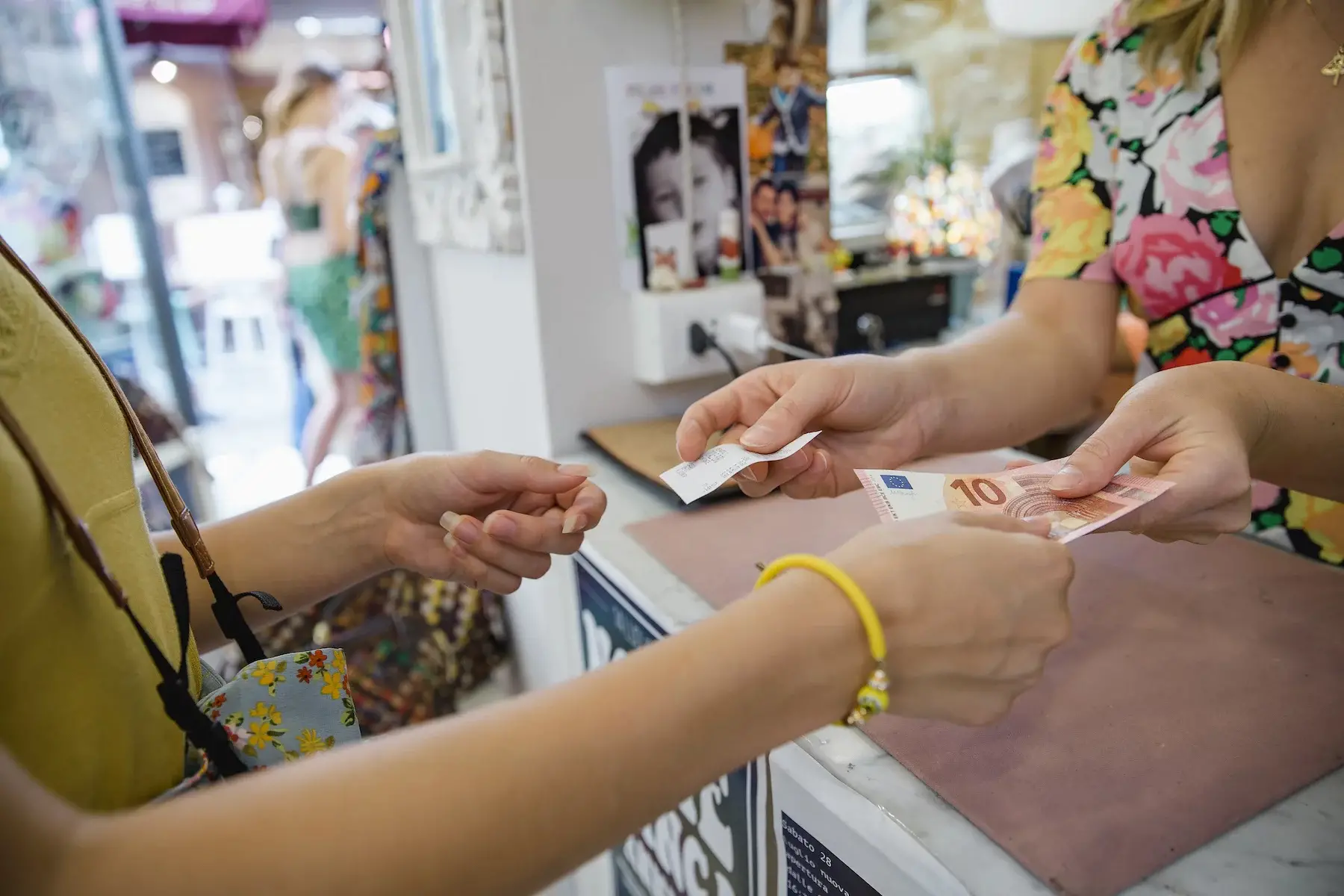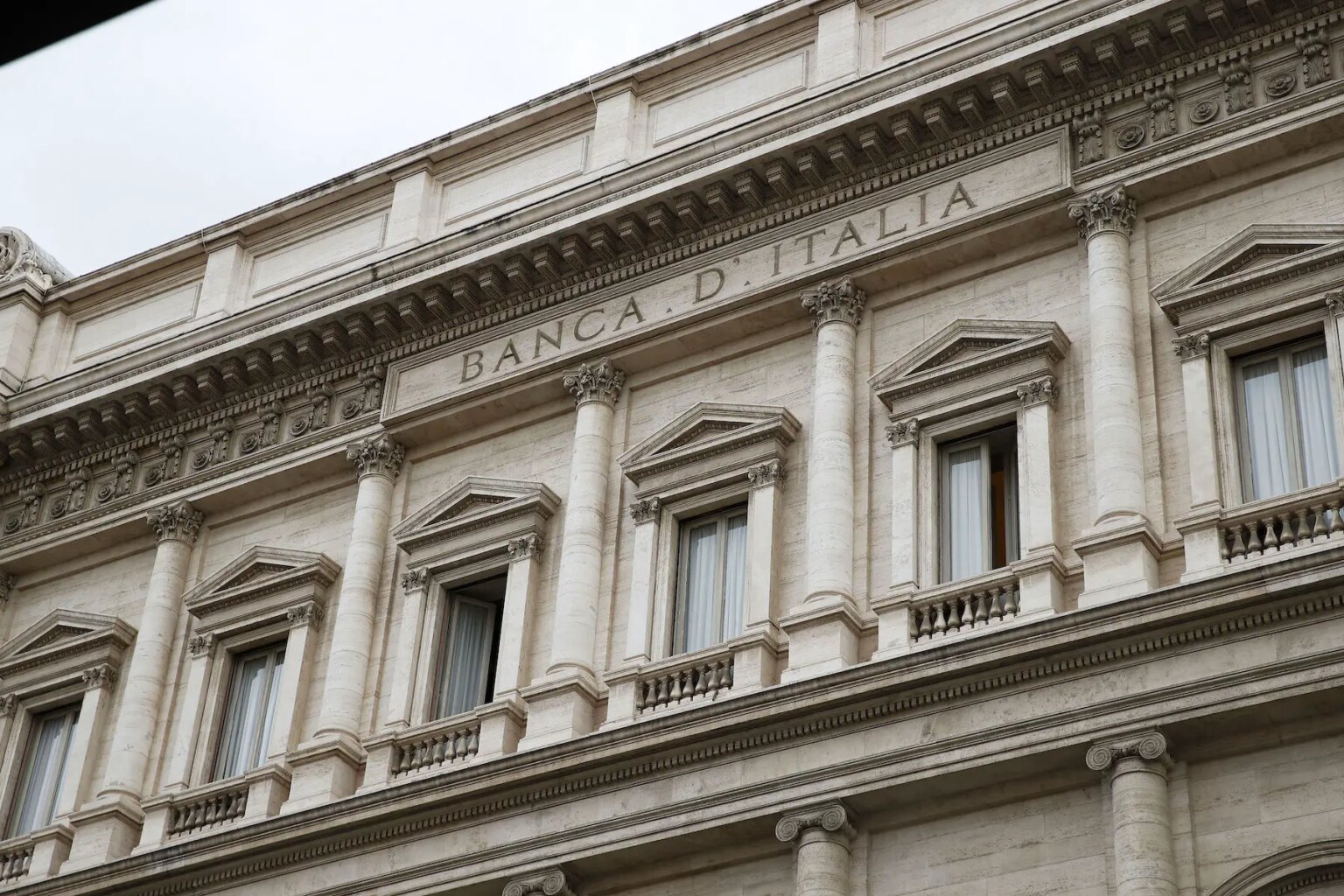Going as far back as the Renaissance period, Italy’s sophisticated banking system has a rich history. Fun fact, the world’s first state deposit bank, the Bank of San Giorgio, opened in Genoa (Genova) in 1407.
Once you have settled into your new home, found a school for your children, and started at your new job, you will probably want to find a local bank.
Modern Italian banking includes a mix of domestic, international, and mobile banks. These providers offer everything from savings to cross-border money transfers and insurance products.
When you’re ready to open your first Italian bank account, read on to learn all you need to know about the country’s banking system:
- The banking system in Italy
- Italian currency
- Italian banks
- Banking services in Italy
- Opening an Italian bank account
- Payment methods in Italy
- Italian banking fees
- Offshore banking
- Ethical banking
- Banking security and fraud in Italy
- Making a complaint about an Italian bank
- Alternatives to using banks in Italy
- Useful resources
N26
N26 is the bank you'll love to use: open your bank account in just eight minutes with no paperwork. Take control of your finances with one app where you can manage limits, set your PIN, lock/unlock cards, and make no-fee transactions anywhere in the world.
The banking system in Italy
Italy has a long history offering financial services, with some of the country’s largest credit institutions dating back hundreds of years. One of the most prominent Italian banks – Banca Monte dei Paschi di Siena – is the oldest surviving in the world, having been founded in 1472.

There are three main types of banking institutions in Italy:
- Commercial banks (including national, regional, international, cooperative banks)
- Savings banks
- Other credit providers
The banking sector has undergone much reform and digitization in recent years, with the growth of mobile banks and declining numbers of physical companies and branches. There are just over 200 different banks in Italy, and nearly 24,000 total branches as of 2020.
The Bank of Italy (Banca d’Italia) is the country’s central bank providing regulation and supervision to the financial sector in cooperation with the European Central Bank (ECB).
Italian currency
Italy is part of the Eurozone, and its official currency is the euro (€/EUR) which replaced the Italian lira in 2002. In circulation, there are seven notes (5, 10, 20, 50, 100, 200, and 500) and six coins (1, 2, 5, 10, 20, and 50 cents).
You can find information about exchange rates between the euro and other currencies on the ECB website.
Cash machines and ATMs
BANCOMAT is the name of the interbank network that provides cash machines in Italy. Around the country, their ATMs are known simply as bancomats. In 2021, there were around 48,000 bancomats across Italy, identifiable by a large blue logo that looks like the number three on a white background.
Most bancomats take international cards such as Visa, Mastercard, and American Express. However, if you are withdrawing from an account outside the bancomat’s network, there may be transaction fees and even currency exchange charges for foreign cards. Bancomats usually have a maximum daily withdrawal amount of around €250.
You can find your nearest bancomat using a global locator service from Visa, Mastercard, or American Express.
Italian banks
There are several different types of Italian banks. Commercial retail banks are the most common – found on main streets with shops and restaurants – offering a range of services to individuals and businesses.
Commercial banks can be state-owned, private, or cooperative and vary in size from large national and international institutions to smaller regional providers. On the other hand, savings and investment banks specialize in wealth management services, while online-only institutions cater to those who live an international lifestyle.

Bank branches are generally only open from 08:00–13:30 Monday to Friday, although some may also open for a couple of hours in the afternoon (around 14:30–16:30). You can find counter service in most branches. However, you may need to make an appointment for specialized consultations (e.g., getting a loan)
National Italian banks
Italy’s national banks are largely public corporations (società per azioni) with shares in the stock market. Main providers include:
- Banca Monte dei Paschi di Siena
- Banca Nazionale del Lavoro
- Banco BPM
- FinecoBank
- Intesa Sanpaolo
- Poste Italiane
- UniCredit
Cooperative banks
Cooperative banks (società cooperativa) are mostly regional Italian institutions owned by autonomous associations. They usually provide the same services as national banks. However, some smaller companies may not offer such an extensive range or fully digitized products. Italian cooperative banks include:
- Banca Agricola Popolare di Ragusa
- Banca di Credito Cooperativo di Roma
- Credit Agricole Italia
- Banco Popolare del Lazio
International banks
Many foreign multinational banks also have a presence in Italy. They generally provide the same services and are more likely to have English-speaking staff. International banks found in Italy include:
- BNP Paribas
- Crédit Agricole
- Deutsche Bank
- HSBC
- ING
- Santander
Savings and investment banks
These banks specialize in savings packages. They may offer a different range of services to retail banks, such as checking accounts. Some of the big names in Italian investment banking include:
- Banca Profilo
- Cassa Depositi e Prestiti
- ICCREA Banca (central institution for rural savings banks and credit institutions)
- Mediobanca
Digital banks
Digital banking includes online and mobile banks, which differ from mainstream providers because they don’t have branches. As such, their services differ slightly, tailored towards the modern banking customer (and expats) who prefers to make payments and manage funds via smart devices. Some digital banks and transfer services you can use in Italy are:
Banking services in Italy
Each Italian bank provides its own range of products. Commercial retail banks in Italy generally offer the following:
| Product | Purpose |
| Current accounts | For day-to-day money management; common features include debit cards, credit cards, and overdrafts |
| Loans | Available for things such as cars, holidays, or home improvements |
| Mortgages | A range of lending options for those wishing to buy property in Italy |
| Savings and investments | Options typically include savings accounts, stocks and shares investment, pensions, and wealth management advice |
| Insurance | This may include home, vehicle, and health insurance |
| Digital/online banking | Major Italian banks now offer the option to manage your finances and access products via their website |
| Mobile banking | Like digital/online banking but designed with smartphones and apps in mind |
| Business banking | A range of products for those running a business, starting a business, or working as a freelancer in Italy |
| Expat services | Some Italian banks offer services and products aimed at the international community, such as deals on global money transfers or multi-currency accounts |
Opening an Italian bank account
The procedure for opening a bank account in Italy varies between institutions. Some providers only offer accounts to residents, whereas others have non-resident accounts that you can open from outside the country. Some banks allow you to set up an account via their website but others still require you to visit a branch and open it in person.
Exact documentation requirements vary but, generally, you have to provide the following:
- Valid passport or photo ID
- Italian residence permit
- Italian tax number
To open a savings account in Italy, you may need to meet additional requirements such as depositing a minimum amount of money.
Payment methods in Italy
Cash
Cash remains a more popular form of payment in Italy than in many other European countries and, in 2019, made up 86% of the country’s transactions. However, the percentage of total transactions made in cash declined to 58% in 2020, likely due to the COVID-19 pandemic.

You can withdraw euros from any ATM in Italy. Cash is primarily used for smaller transactions, although some still use it for larger purchases or paying on delivery for items bought online. However, things are beginning to change with the rapid growth and convenience of alternative and online payment systems.
Checks
You can still pay by check for many products and services in Italy. However, outlets may set minimum purchase amounts for this method. Some banks have stopped issuing checkbooks altogether, so you’ll need to inquire about this before opening an account if you prefer to use checks. It’s worth noting that when you pay by check in Italy, you’ll have to write in Italian.
Debit cards
Debit cards are commonly used in Italy; most stores and online providers accept them. According to a 2019 J.P. Morgan report, 27.7% of online payments in Italy were made by debit card. You can use both Visa and Mastercard in Italy. If you open an Italian account, your bank may issue you with a CartaSi card, one of the most popular payment forms.
Typically, you do not pay any service fees to use a debit card. However, there are sometimes charges on those linked to foreign accounts, which can be as high as 3%. Most businesses in Italy now accept contactless payments, although, some places may not accept a card for low transaction amounts (e.g., below €5).
Credit cards
Credit cards in Italy are less popular than debit cards, with an online payment share of around 6.1%. The country’s most popular credit cards include Visa, Mastercard, CartaSi, American Express, and Discover. Visa, Mastercard, and CartaSi are accepted nearly everywhere, while American Express and Discover are slightly less popular.
Direct debits and standing orders
Italian residents often use direct debit to pay regular monthly bills, like utilities or rent. You can set up a direct debit by contacting your bank or giving consent to a service provider to set up a payment schedule. Direct debit payments are made through Single Euro Payments Area (SEPA) transfer and usually only available within the Eurozone.
Online and mobile payments
More Italian residents use digital payments as a convenient way to pay their bills. Over two-thirds of Italians now use smartphones, increasing the use of mobile payment apps and digital wallets. Payments through mobile devices made up nearly one-third of all e-commerce in Italy in 2019.

Like in many countries, Italy’s popular mobile payment systems include Apple Pay, Google Pay, and PayPal. Most major Italian banks now also offer mobile banking applications that allow customers to pay on the go. There is also a selection of online-only banks that offer extensive digital payment options.
Local money transfers
You can make a SEPA credit transfer to any account in the Eurozone, if you have an Italian bank account. This is a popular payment method for one-off bills since it’s free and quick, with money typically arriving within a day. You can do it yourself if you have online banking, or by contacting your bank and providing them with the necessary details.
Bank transfers accounted for 11.6% of all online transactions in Italy in 2019.
International money transfers
You can use an international money transfer if you need to send money outside the Eurozone. Most banks provide this option, but the fees vary and can be pretty expensive. Companies offering international banking services and international money transfers include:
- Atlantic Money provides money transfers at the live exchange rate for a flat €3 fee, saving you additional costs. Choose from a standard a or express delivery.
- CurrencyFair offers international money transfers to over 150 countries. They have exchange rates up to eight times cheaper than the banks, helping you avoid excessive bank fees.
- Wise is an international money transfer provider available in 59 countries that offers transfers between cross-border bank accounts up to eight times cheaper than traditional banks.
International transfer fees usually depend on the amount being sent, where it’s going, and how quickly it should arrive. Most funds are delivered within 2–5 days, although leading providers may offer express options for speedier transfers.
Italian banking fees
Italian banking fees can vary widely depending on your account type and the services you use. Some banks have free basic non-resident account options, while others issue a small monthly charge, ranging from €3–20 per month. Banca d’Italia publishes an annual survey (in Italian) of banking costs for households.
It’s worth shopping around before opening an Italian bank account so that you can find the best deal for you. Most banks will list their fees on their website, or you can contact them for details. Here is a rough guide of what to expect in terms of costs:
| Service | Explanation of fees |
| General administration | Typically ranges from free standard personal accounts to around €20 a month for high-end options – some savings accounts may require minimum initial deposits. |
| ATM/Bancomat use | Free if you use your own bank’s ATM network, fees of €1–3 may apply if you withdraw from overseas or an out-of-network account |
| Debit and credit cards | Italian debit cards are usually free, but credit cards can have a fixed fee of up to €40 per year. You will also have to pay annual percentage rate (APR) charges on credit cards plus foreign transaction fees of up to 3%. |
| Loans and mortgages | Typically includes APR charges and possibly a one-off administration fee. Exact amounts vary across providers. |
| SEPA transfers | Usually free up to a certain amount |
| International transfers | Varies across providers and depends on amount and destination. |
| Penalty fees | You can be charged for late payments, defaulted payments, or exceeding your overdraft. Contact your provider for a list of fees. |
Offshore banking
Italy has stricter rules than many other countries regarding non-residents opening bank accounts. However, some Italian investment banks offer a range of offshore banking options for those who do not live in the country. These could be advantageous if you spend a lot of time in Italy, have a social base there, or carry out many transactions in the country.
Ethical banking
Like many countries, the financial sector in Italy still has a long way to go concerning ethics and sustainability.
However, in recent years, it has adopted new business practices such as corporate social responsibility (CSR) models, ethical investments, and green banking. The leader in this respect is Banca Etica, which places ethical finance at the core of its business model. Banca Etica even has a foundation (Fondazione Finanza Etica) that produces reports on financial ethics across Europe.
If you are concerned about the ethical performance of your bank, you can check their website for CSR reports or ask your bank for information on their sustainability strategy. You can also check performance rankings on global sites such as CSRHub or Corporate Knights. UniCredit (59th place) and Intesa Sanpaolo (90th place) are the two Italian banks that made the Corporate Knights 100 list for 2022.

Another sustainable option is to use a digital or mobile bank. They tend to have a smaller carbon footprint as they use fewer resources to operate and often have fewer links to major global corporations.
Banking security and fraud in Italy
Although the increasingly online nature of banking has made financial crimes more commonplace, Italy’s fraud rates remain relatively low. The country’s credit card vulnerability ranks in 17th place in Europe (i.e., healthy score), having a fraud value of just under €1.30 per inhabitant.
Common scams include:
- Phishing – suspicious emails or texts asking for personal financial information
- Public Wi-Fi scams – fraudsters setting up an unsecured hotspot in a public place and using it to steal banking details or passwords
Despite the low fraud rates, Italian banks continue to ramp up security measures to keep their customers safe. The following are considered best practices to avoid scams and fraud:
- Never click on a web link to your bank account sent in an email. Banks do not send emails like this, so if you receive one, it’s probably fake. Instead, access your account only through a web browser or app.
- Avoid giving sensitive or confidential information if you receive an email or phone call from your bank. If your bank calls you and asks for information, request a number to call them back. Instead of phoning this number, call the bank’s main phone directory to check if the number and call is legitimate.
- Only use secure and verified payment platforms when shopping online
- Never enter your PIN anywhere online
- Avoid logging onto your account using any shared device or public Wi-Fi
- Always log out of your online financial accounts when finished
- Take advantage of the heightened protections banks may offer, like two-factor authentication
Lost or stolen bank cards
If your credit or debit card is lost or stolen in Italy, report it to your bank immediately. Emergency numbers should be available on each bank’s website. You can also reach the card providers at the following numbers:
| Card | Number |
| Visa | +1 303 967 1090 |
| Mastercard | +1 636 722 7111 |
| American Express | +1 801 849 2124 |
Note that incidences of theft should also be reported to the Italian police.
Making a complaint about an Italian bank
If you have a complaint about financial products or services, you should try to resolve the issue through your bank. Each bank will have its own complaints procedure and department.
Following an unsatisfactory outcome, you can submit a complaint to Banca d’Italia, Italy’s central banking regulatory authority. You can also appeal to one of the two dispute resolution services:
- The Banking and Financial Ombudsman (Arbitro Bancario Finanziario)
- The Banking and Financial Conciliator (Conciliatore Bancario Finanziario)
As a last resort, you can take the matter to an Italian court. Bear in mind, however, that this process can be slow and expensive.
Alternatives to using banks in Italy
Italy doesn’t have the network of credit unions or mutual savings funds that you find in some other countries. You can try smaller regional savings or cooperative banks if you want an alternative to mainstream retail banking. However, these typically only function in Italian and some may not provide a full range of services.
Another option is to open a mobile-only account, which gives you instant access to funds with a wide array of banking and payment options.
Useful resources
- Banca d’Italia – the central bank of Italy and the main supervisory and regulatory body
- Banking and Financial Ombudsman (Arbitro Bancario Finanziario) – independent dispute resolution service







